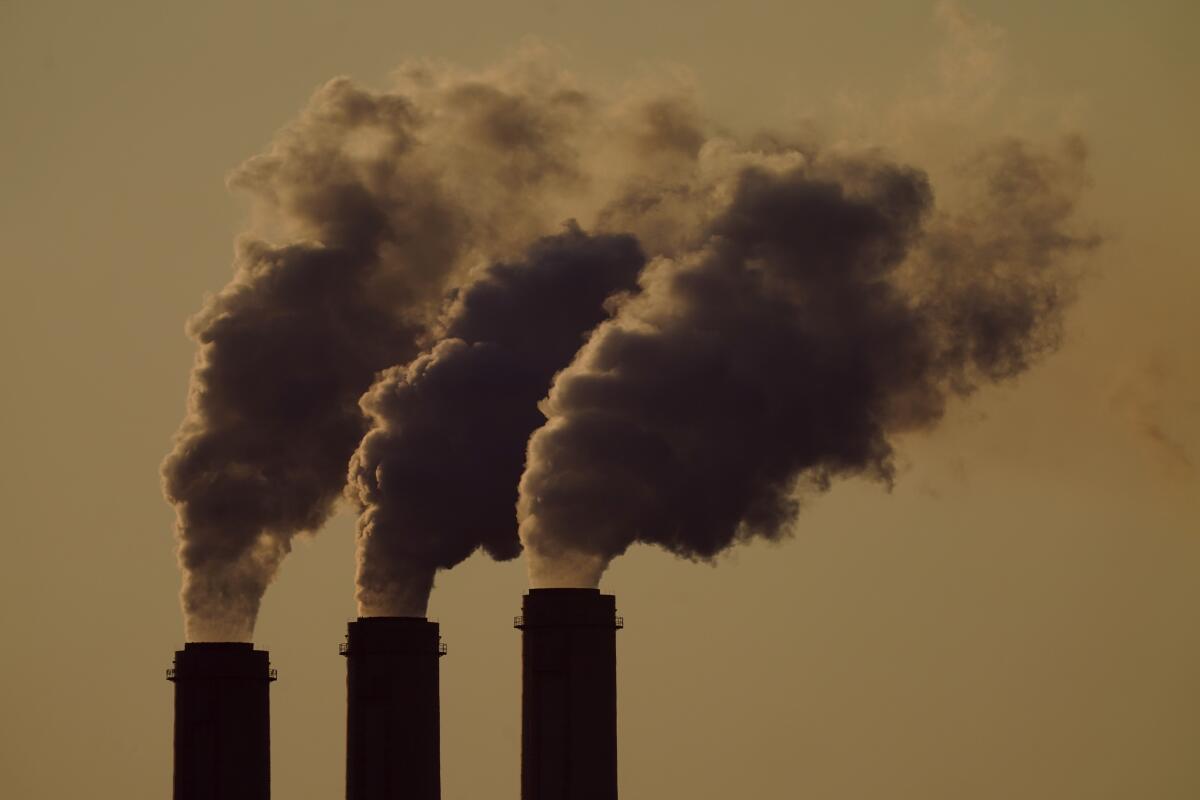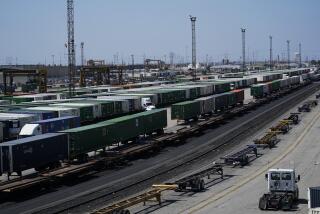EPA plan would limit downwind pollution from power plants

- Share via
WASHINGTON — The Environmental Protection Agency is proposing a plan that would restrict smokestack emissions from power plants and other industrial sources that burden downwind areas with smog-causing pollution they can’t control.
The federal plan is intended to help more than two dozen states meet “good neighbor” obligations under the Clean Air Act.
States that contribute to ground-level ozone, or smog, are required to submit plans ensuring that coal-fired power plants and other industrial sites don’t add significantly to air pollution in other states. In cases in which a state has not submitted a “good neighbor” plan — or where the EPA disapproves a state plan — the federal plan would take effect to ensure downwind states are protected.
“Air pollution doesn’t stop at the state line,” EPA Administrator Michael Regan said in a statement Friday. The new federal plan “will help our state partners meet air quality health standards, saving lives and improving public health in smog-affected communities across the United States.”
Russia’s missile attack in western Ukraine on a military training facility near Poland brings the war closer to NATO territory.
A 2015 rule set by the EPA blocks states from adding to ozone pollution in other localities. The rule applies mostly to states in the South and Midwest that contribute to air pollution along the East Coast. Some states, such as Texas, California, Pennsylvania, Illinois and Wisconsin, both contribute to downwind pollution and receive it from other states.
Ground-level ozone, which forms when industrial pollutants chemically react in the presence of sunlight, can cause respiratory problems, including asthma and chronic bronchitis. People with compromised immune systems, the elderly and children playing outdoors are particularly vulnerable.
A report last year by the American Lung Assn. found that more than 123 million Americans lived in counties that experienced repeated instances of unhealthy ozone levels. Climate change is likely to exacerbate the problem by causing more hot sunny days conducive to high ozone levels.
The EPA rule set a standard of 70 parts per billion, a level that some environmental and health groups argued falls short. Business leaders and Republicans said the Obama-era rule could harm the economy and cost jobs.
The Trump administration moved to weaken the rule, but the EPA under President Biden said it was restoring pollution controls on power plants and industrial sites.
The cross-state pollution rule “protects millions of Americans across the Eastern U.S. from smog that blows across state lines and then permeates their communities,’’ said Graham McCahan, a senior attorney for the Environmental Defense Fund.
The proposed update “will encourage more power plants to invest in clean, affordable zero-emitting power, which will help more upwind states be ‘good neighbors’ as the Clean Air Act requires,’’ McCahan said.
Delaware Sen. Tom Carper, a Democrat who chairs the Senate Environment Committee, hailed the EPA proposal.
“Similar to secondhand smoke, air pollution has negative health impacts in communities across the country. That is especially true for those of us in downwind states like Delaware, where over 90% of our air pollution comes from out of state,’’ Carper said.
The National Assn. of Manufacturers was skeptical.
“At a time when our supply chains are snarled, inflation is skyrocketing and Russia’s war on Ukraine continues, we must be careful with regulations that could further raise prices on all Americans, slow economic growth and threaten jobs,’’ said Aric Newhouse, a senior vice president of the manufacturers group, which represents companies in every industrial sector and in all 50 states.
Manufacturers will work with EPA to ensure the rules can “achieve shared goals in a constructive way,” Newhouse said.
The EPA proposal would affect power plants starting next year and industrial sources in 2026. The plan would cover boilers used in chemical, petroleum, coal and paper plants; cement kilns; iron and steel mills; glass manufacturers; and engines used in natural gas pipelines.
The proposed rule includes a 60-day public comment period. The EPA expects to issue a final rule by the end of the year.
More to Read
Sign up for Essential California
The most important California stories and recommendations in your inbox every morning.
You may occasionally receive promotional content from the Los Angeles Times.











